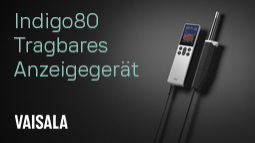- Produkte, Geräte, Systeme, Anlagen für Anwendungen
Reducing impact of agar desiccation
Desiccation of media is the biggest issue facing operators when exposing settle plates in high airflow environments, such as laminar airflow cabinets or class II microbiology safety cabinets and isolators. This desiccation occurs during the maximum recommended exposure time of four hours.
Agar plates drying out in incubators can have a significant impact on their performance. It’s important the agar doesn’t shrink from the edge of the Petri dish or crack during exposure. This ensures the maximum surface area is constantly exposed to the environment, and that the agar is able to show good recovery of regular test organisms, both post exposure and post incubation.1
Operating environment and media formulation
If there’s excessive shrinkage even in deep-filled plates, it’s possible there are issues with the operating environment: the airflow may be too high, or the air too warm, for example – also known as the hair dryer effect. If the operating environment can’t be changed, then the settle plates may need to be replaced every couple of hours, rather than waiting the full four hours.
Sometimes the agar cracks down the middle as it shrinks. This can happen with irradiated media containing disinfectant neutralisers, particularly in high-airflow environments. In such circumstances it might be necessary to reconsider the use of neutralisers in settle plates. Neutralisers are necessary in Petri dishes when used as glove dabs or streaking swabs, but their necessity in media for passive air sampling is debateable.
Choosing appropriate media fill volume
While desiccation of agar will occur, the greater water content of a deeper fill volume means this takes longer, and also reduces the likelihood of cracking. Cherwell’s Redipor range of irradiated agar is available in several fill volumes to meet the needs of the working environment:
– 18ml: standard fill volume for 90mm petri dishes
– 27ml: deep-fill equivalent, and the most popular for high-airflow environments
– 32ml: extra-deep fill; for use in environments where dehydration is a real problem
Hopefully the above is good advice for helping you choose the appropriate fill volume and formulation for your requirements. If you have any further queries or comments, we’re happy to assist.
Reference
1. Sandle T. Settle plate exposure under unidirectional airflow and the effect of weight loss upon microbial growth. European Journal of Parenteral & Pharmaceutical Sciences 2015;20(2):45-50
Cherwell Laboratories Ltd
OX26 4XB BICESTER
Vereinigtes Königreich









